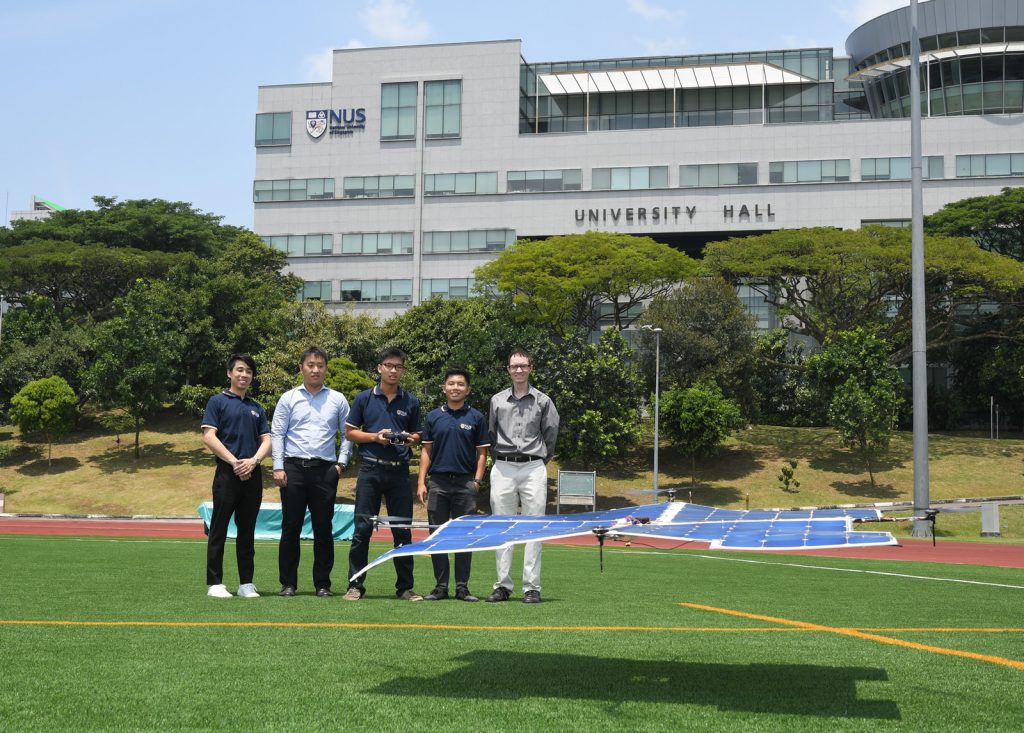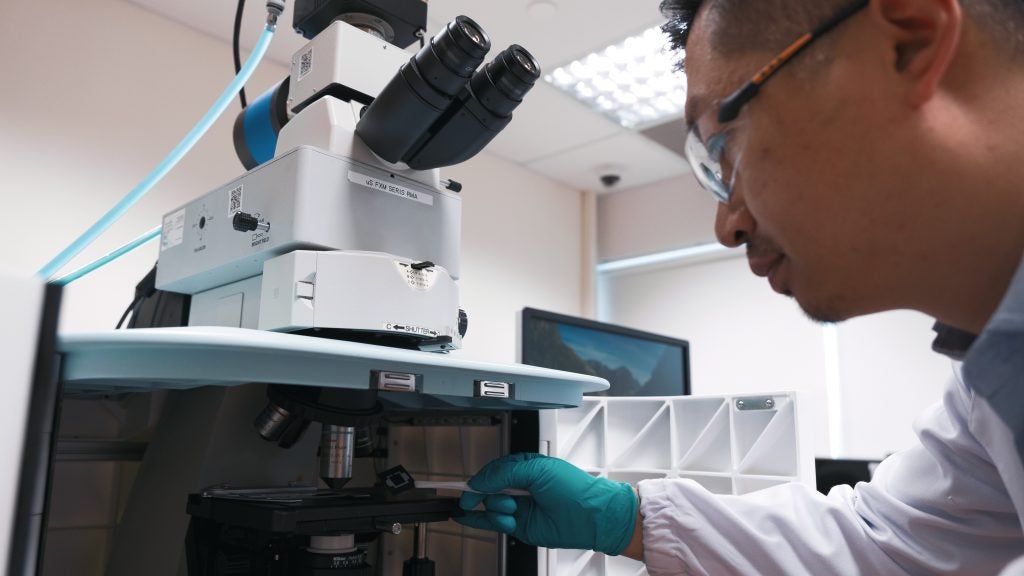
Class of 2018 NUS Engineering alumni Goh Chong Swee, Kuan Jun Ren and Yeo Jun Han have achieved a major step forward - they have created Asia's first fully solar-powered quadcopter drone!
Utilising solar power with no battery or other energy storage on board, their current prototype has flown above 10 metres in test flights - higher than a typical three storey building. The solar-powered quadcopter drone, which was developed as a student project under the Innovation & Design Programme (iDP) at NUS Engineering, can take-off and land vertically without a runway.
Constructed using lightweight carbon fibre material, the drone weighs only 2.6 kg, and has a surface area of about 4 sqm. It is fitted with 148 individually characterised silicon solar cells and supported by a frame equipped with four rotors. The drone can be controlled by remote control or programmed to fly autonomously using a GPS system incorporated into the aircraft.
It can potentially be used as a 'flying solar panel' to provide emergency solar power to disaster areas, as well as for photography, small package delivery, surveillance and inspection by installing a camera to it. When there is no sunlight or for charging to take place during flight to enable operation when it is cloudy or dark, batteries can be incorporated to power the aircraft.
Supervised by Assoc Prof Aaron Danner from NUS Electrical and Computer Engineering, the team will continue to fine-tune the aircraft to further improve its efficiency. With these enhancements, the team hopes to bring the technology closer to commercialisation.
"Our aircraft is extremely lightweight for its size, and it can fly as long as there is sunlight, even for hours. Unlike conventional quadcopter drones, our aircraft does not rely on on-board batteries and hence it is not limited by flight time. Its ability to land on any flat surface and fly out of the ground effect in a controlled way also makes it suitable for practical implementation," said Assoc Prof Danner.





